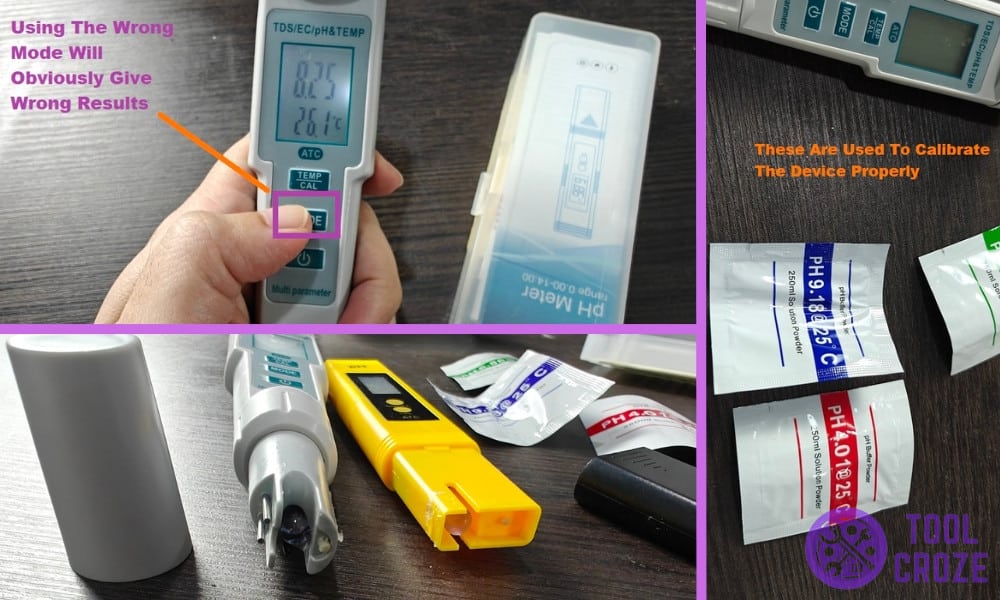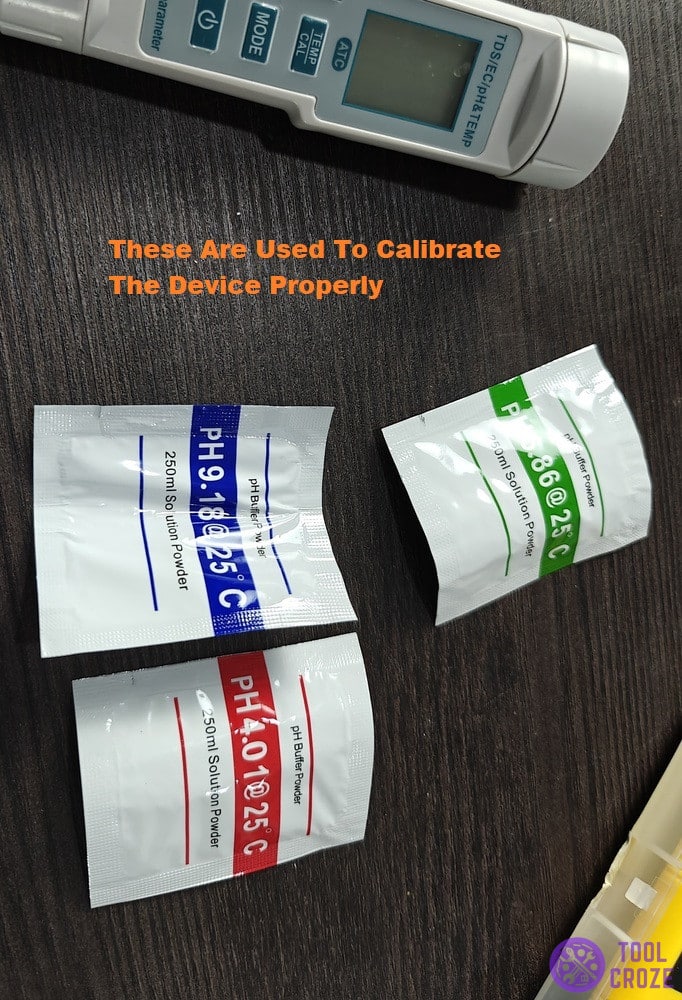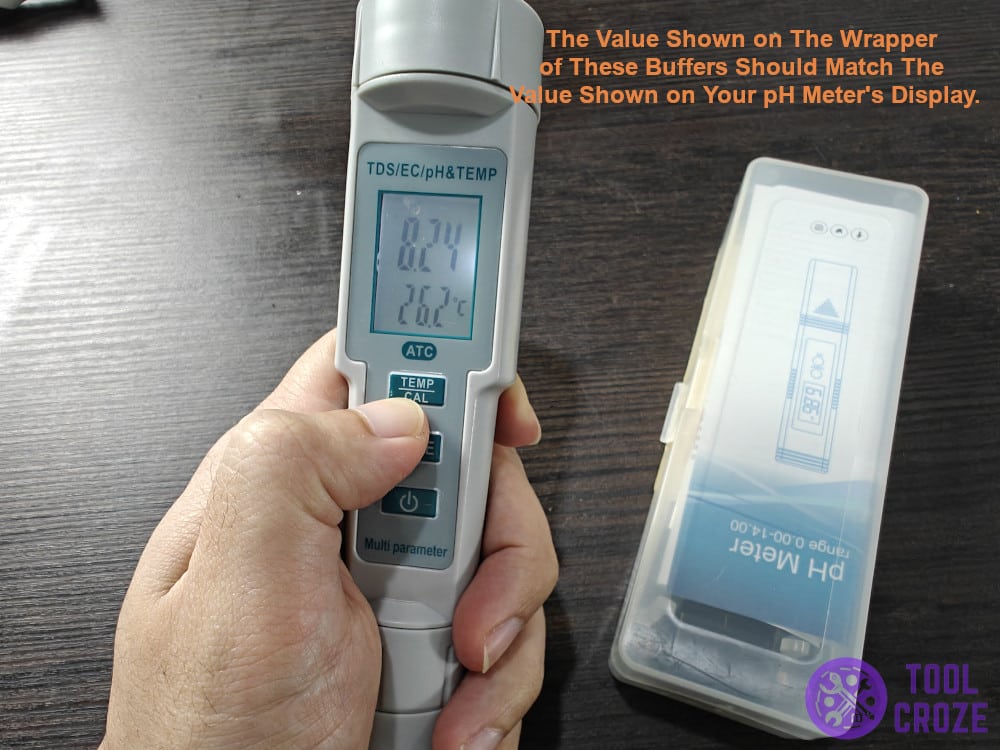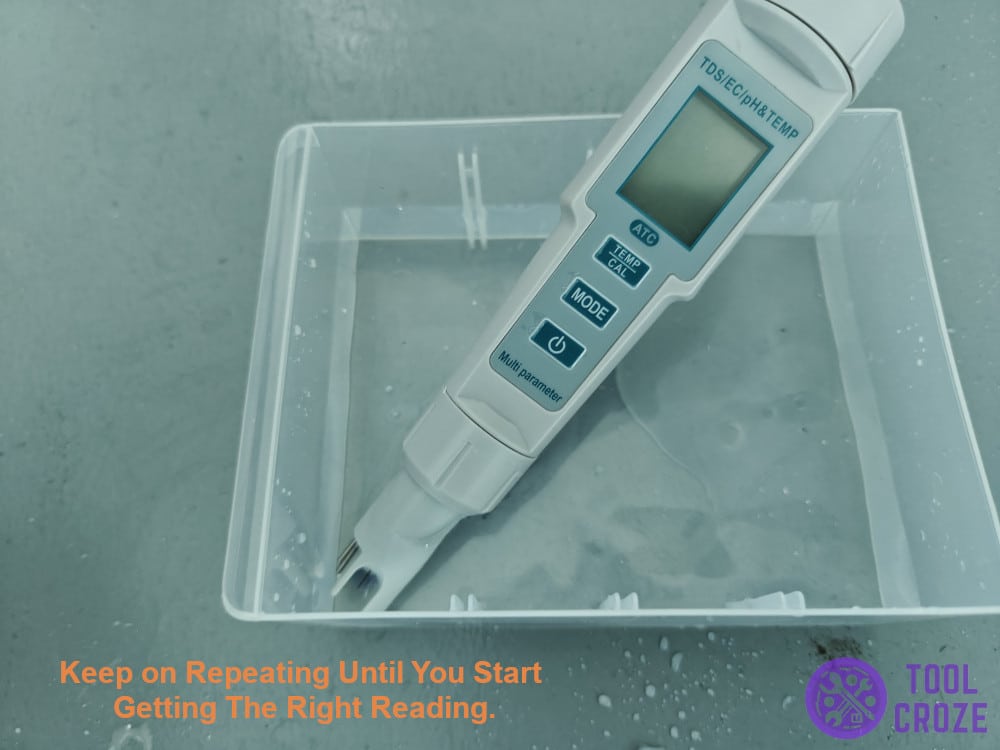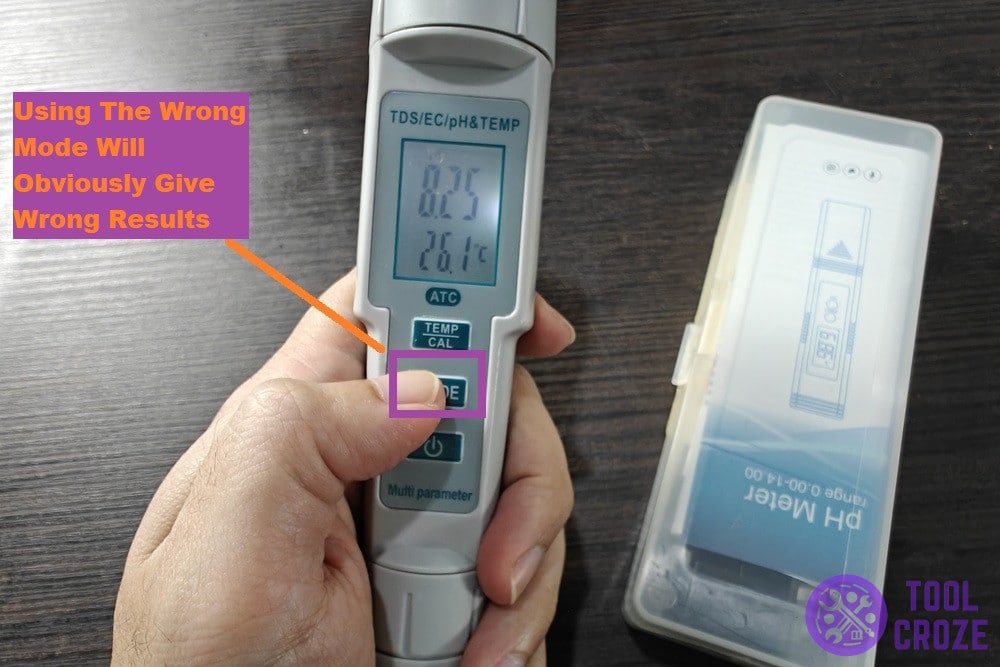A pH meter is all about readings, so what happens when it’s not giving accurate ones? Well, to put it simply, the tool will be pretty useless since it can’t complete its only purpose correctly.
But, you can amend that by fixing it! I had a pH meter that was acting up too, but I was able to deal with it. Today, I want to share some of the things that helped me, so you can try them out too.
pH Meter Not Giving Accurate Readings – 3 Fixes
- Calibrate The Device
The best way to deal with a pH meter that’s not giving accurate readings is to calibrate it. After all, the entire purpose of calibration is to help make readings more accurate.
It’s pretty easy to do, as long as you have the right things. Fortunately, the internet helps with that, since you can order anything you don’t have online!
In this case, all you need are buffer solutions. These solutions, which I’ll share a picture of below, are super common for calibrating pH meters.
That’s because they’re cheap, easy to get online, and have predetermined pH values. Once you have them, all you need to do is use the tool to measure these solutions.
To start calibrating, use the tool’s probe on a buffer with a pH value of 7.0, preferably. It’s the perfect middle ground. The value on the meter should be 7.0 exactly when you do this.
If that’s not the case, adjust the value on your display accordingly. Make sure that you display it at exactly 7.0 so any discrepancies are accounted for and you get readings.
Now, to test it out, take the pH meter out of the 7.0 pH buffer and clean it well. Now, use it to measure another buffer of a different value, preferably a few levels above or below 7.0 pH.
When you measure this new buffer, it should give you an accurate reading after you adjusted it earlier. But, if it doesn’t give a good reading still, adjust it again.
Keep repeating this until you start getting the right reading for each fresh buffer you use. Once 2-3 buffers are read without any mistakes in accuracy, your pH meter’s calibration is complete.
In case you encounter a problem while calibrating your device, I’ve written an article about the different solutions you can do to fix your pH meter not calibrating.
- Use The Right Modes
Modern pH meters come with different modes. Each of these serves a specific purpose and is helpful situationally. But, when you use the wrong mode at the wrong time, that will lead to inaccurate results.
So, this solution is pretty easy. Just make sure you’re using the right mode and the readings will be accurate! You can see me pressing the button to change modes on my pH meter in this photo:
Yours should have an option like this too. Press it until you’re at the right setting for the job you want to do, and the readings should be accurate if nothing else is wrong.
- Expired Sensors
The probe of a pH meter, also known as its sensor, only works up until a certain point. This point is around 12-18 months after the probe was manufactured.
These things usually have letters and numbers on them that tell you about their manufacturing date. Take a look at your pH meter’s sensor to see if it has any of those as well.
Once you find the markings I’m talking about, make sure that the sensor you’re using isn’t over a year old. If it is, that just means that it is too old for proper use anymore.
An old sensor can’t provide accurate readings anymore, hence why you’re facing this issue. Replace it, and you’ll see that your pH meter will be working A-okay afterward!

